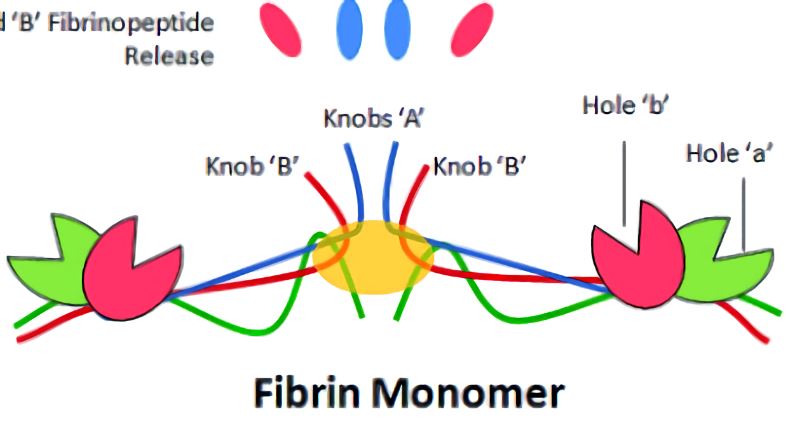Fibrin II-beta Chain
 Fibrin is a blood-borne glycoprotein which is composed of three pairs of nonidentical polypeptide chains. Fibrin is formed after thrombin is cleaved by fibrinopeptide A (FPA) from fibrinogen. Thus fibrin polymerization is initiated. Fibrin plays an important role in blood clotting, fibrinolysis, cellular and matrix interactions. Besides, it is also involved in the inflammatory response, wound healing, and neoplasia. These functions are regulated by interactive sites on fibrin.
Fibrin is a blood-borne glycoprotein which is composed of three pairs of nonidentical polypeptide chains. Fibrin is formed after thrombin is cleaved by fibrinopeptide A (FPA) from fibrinogen. Thus fibrin polymerization is initiated. Fibrin plays an important role in blood clotting, fibrinolysis, cellular and matrix interactions. Besides, it is also involved in the inflammatory response, wound healing, and neoplasia. These functions are regulated by interactive sites on fibrin.
When individuals are undergoing vascular injury, fibrinogen is cleaved by thrombin to form fibrin. In addition, a variety of cleavage products of fibrinogen and fibrin regulate cell adhesion and spreading They display vasoconstrictor and chemotactic activities and are mitogens for several cell types. Mutations in Fibrin II-beta chain lead to several disorders, including afibrinogenemia, dysfibrinogenemia, hypodysfibrinogenemia and thrombotic tendency.
Fibrinogen is the precursor of the fibrin clot and as such is an important regulator of fibrin clot structure and function. Clot structures with increased fibrin fiber density and resistance to fibrinolysis associated with cardiovascular disease and higher risk for thrombosis.
Fibrin structure is altered in patients with thrombotic disorders. A number of studies have shown increased fibrin clot density and increased resistance to lysis in patients with venous thromboembolism and their first-degree relatives.
If you can’t find your product on this list? Please directly send email to
For Research Use Only. NOT FOR CLINICAL USE.
Online Inquiry
Welcome! For price inquiries, please feel free to contact us through the form on the left side. We will get back to you as soon as possible.
